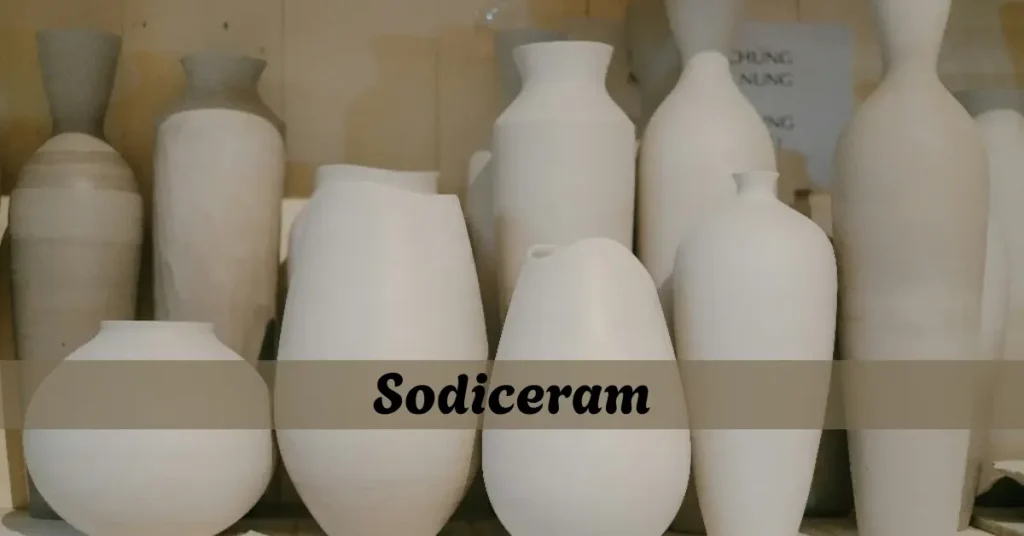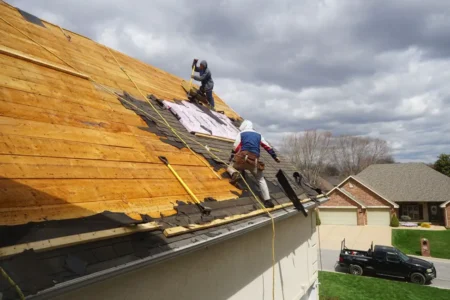Sodiceram is a special type of material made by mixing ceramic with strong metals. It is built to handle heat, pressure, and rough use. Many factories use Sodiceram because it stays strong for a long time and does not break easily. This smart material is often used where normal metals cannot work well. Its smooth look and solid power make it useful in many places, especially in metal-related work.
What is Sodiceram?
Sodiceram is a strong and smart material made by mixing ceramic and metal parts. It is harder than many other materials and can stay strong even in hot or rough places. Factories and machines often use Sodiceram because it does not crack or melt easily. It looks smooth like glass but works tough like metal. This mix of beauty and strength makes Sodiceram special for many metal-based jobs.
How Sodiceram Was Invented
Sodiceram came from laboratory experiments in material science. Engineers wanted a material that could handle extreme environmens thigh heat, pressure, chemicals but still look good and last long.
They began adding sodium compounds carefully into ceramic mixes. This lowered firing temperatures and improved performance. Over time, production methods improved, making the material consistent and reliable.
What Sodiceram Contains
The typical formula of Sodiceram includes:
- Silicon dioxide (SiO₂) – core ceramic structure
- Sodium oxide (Na₂O) – soda compound for strength and thermal stability
- Alumina (Al₂O₃) – improves hardness and durability
- Other minor oxides (like MgO, K₂O) for stability
This blend results in a dense, hard material with minimal flaws.
Key Properties of Sodiceram
Here is some key properties of sodiceram:
1. Thermal Resistance
Sodiceram can handle very high temperatures and sudden changes in heat without cracking. It expands and contracts little, even when conditions change rapidly.
2. Chemical Resistance
It resists acids, alkalis, grease, and other cleaning agents. Even in harsh chemical environments, it stays intact and clean.
3. Mechanical Strength
Though a ceramic, it resists daily wear, impact, and abrasion. It stays uncracked under heavy use.
4. Low Porosity & Weight
Because of sodium-enhanced firing, it absorbs very little water (< 0.5%) and is lighter than traditional ceramics. This makes it easy to install and maintain.
Yooooga
5. Eco-Friendly Production
Manufacturing uses less energy and emits fewer pollutants. Its long lifespan reduces waste. Some producers even recycle parts or use renewable energy.
How Sodiceram Is Made
- Raw materials (clay, silica, soda, alumina) are milled and mixed precisely.
- Additives like sodium oxide enhance strength and lower firing requirements.
- The blend is cold-pressed under high pressure into the desired shape.
- Finally, it’s fired at high temperature (sintered), fusing the material into a dense, uniform structure.
Applications of Sodiceram
Architecture & Decoration
Used for wall cladding, flooring, large panels, and spa surfaces. Its finishes include matte, glossy, satin, and textured stone or wood look.
Industrial & Laboratory Use
Works well in factories, labs, kitchens, and hospitals. It is hygienic, resistant to sterilizers, and easy to keep clean. Perfect for countertops, fume hoods, or food processing areas.
Automotive & Aerospace
Used in lightweight heat shields, brake parts, and engine components. It helps reduce wear and handles thermal stress.
Art & Design
Artists use Sodiceram for sculptures, patterns, 3D tiles, and personalized finishes. It can be digitally printed, textured, and shaped in creative ways.
Medical Equipment
Its biocompatible surface suits medical devices and surgical tools. It resists cleaning chemicals and biological fluids.
Benefits of Sodiceram
Some benefits of sodiceram:
- Lasts longer, reducing replacements
- Low maintenance, because it resists damage and staining
- Saves money over time despite higher initial cost
- Supports the planet by being durable and eco-conscious
- Offers design flexibility for modern architecture and products
Challenges to Consider
- Higher upfront cost compared to plain ceramic or concrete
- Brittle under tension, though strong under compression
- Not yet widely used everywhere limited global awareness
How Sodiceram Stands Against Other Materials
| Property | Sodiceram | Traditional Ceramic | Concrete/Steel |
| Heat resistance | Excellent | Moderate to High | Moderate |
| Chemical resistance | Excellent | Moderate | Variable |
| Strength to weight | High | Moderate | Heavy |
| Porosity (water absorption) | Very low (< 0.5%) | Higher | Varies |
| Eco‑friendliness | High | Moderate | Lower (if steel) |
| Flexibility | Low | Low | High (steel) |
Future Trends for Sodiceram
- Nanotechnology to boost strength, reduce weight
- 3D printing for custom shapes in art, design, and engineering
- Smart versions with sensors for structure monitoring
- Eco-innovations like solar kiln firing and recycled raw materials
Why Sodiceram Matters
Sodiceram is a breakthrough because it:
- Combines beauty and durability
- Offers hygienic and design-friendly surfaces
- Works in demanding industrial environments
- Supports sustainability goals in construction and manufacturing
Common FAQs About Sodiceram
Some faqs of sodiceram:
1. What exactly is Sodiceram made of?
A mix of silica, sodium oxide, alumina, and minor oxides pressed and fired into a dense ceramic.
2. Can Sodiceram be used outside?
Yes. It stands up to UV light, freezing, heat, and moisture. Great for outdoor tiles and facades.
3. Is Sodiceram non-toxic?
Yes. It resists chemicals and doesn’t release harmful substances, making it safe for kitchens, hospitals, and food prep.
4. Can it be made in different colors and textures?
Absolutely. It comes in glossy, matte, textured, and customizable printed or patterned finishes.
5. Is Sodiceram eco‑friendly?
Yes. It reduces waste, uses low‑emission firing, and lasts longer cutting environmental impact.
6. Does it cost more than normal ceramic?
Usually, yes. But its longer lifespan and durability often make it more cost‑effective overall.
7. Where is Sodiceram made or sold?
By specialized ceramic manufacturers and suppliers often custom or industrial orders. It’s not as common in local stores yet.
8. Is Sodiceram easy to cut or install?
It’s lighter than traditional tiles and easier to handle but still needs proper tools and trained installers.
9. What are its limits?
It can be brittle under tensile stress and may cost more to make. Not for flexible or curved parts.
10. What’s the future of Sodiceram technology?
Expect smarter designs, 3D‑printed components, embedded sensors, and wider use in tech, art, and eco‑manufacturing.
Conclusion
Sodiceram is not just a ceramic it is a powerful, smart material built for the future. Its strength, heat resistance, and long life make it a perfect choice for industries, homes, and creative designs. From factory floors to modern walls, Sodiceram brings safety, style, and solid performance together.
It helps save money over time, stays clean, and works well in many tough places. As more people discover its benefits, Sodiceram is quickly becoming a top choice in metal related and design fields.



